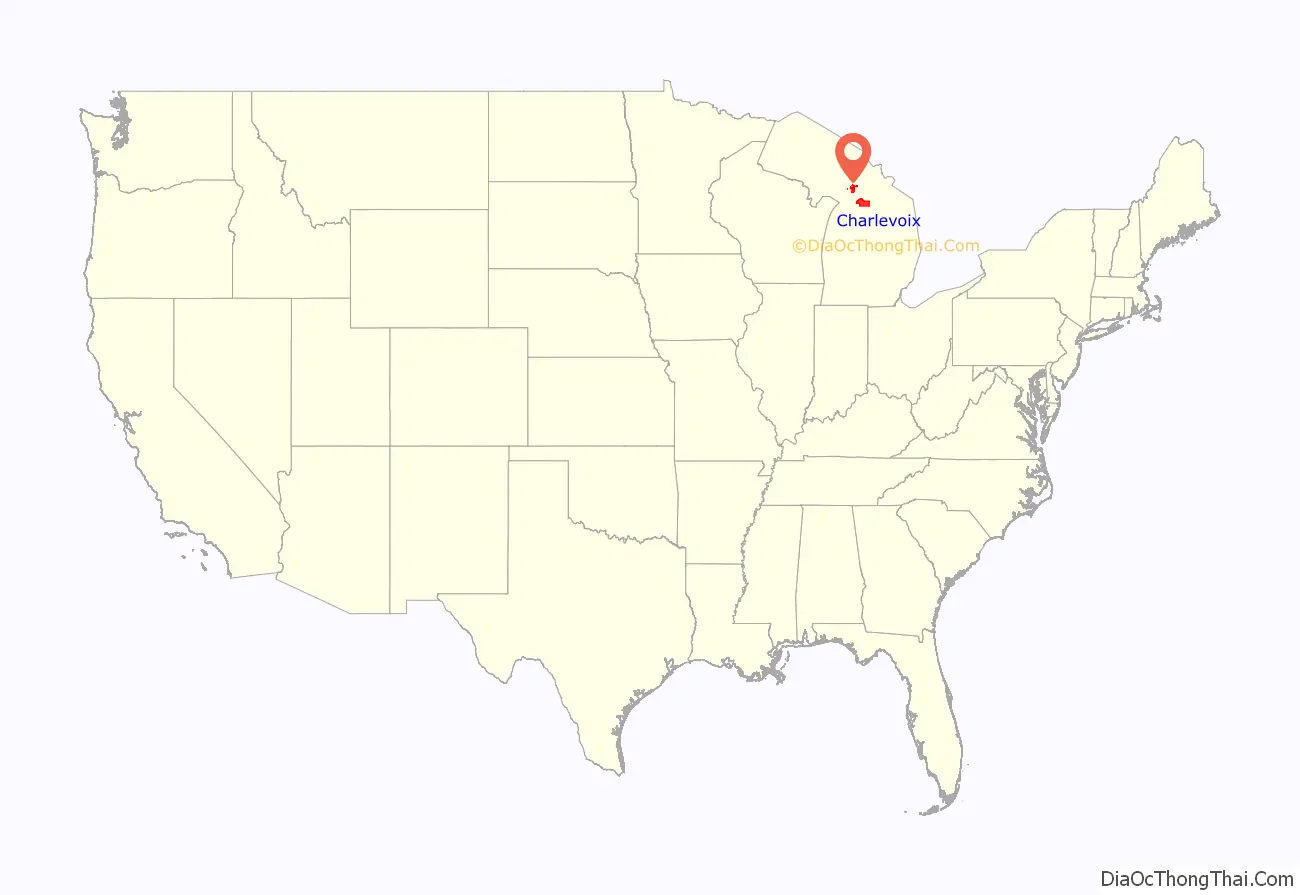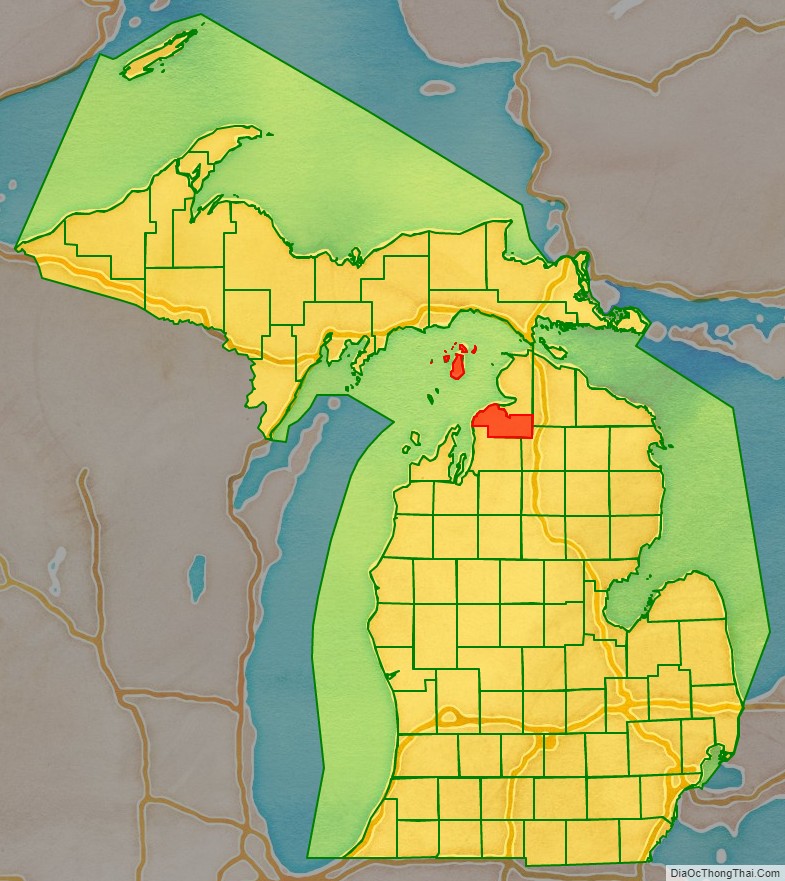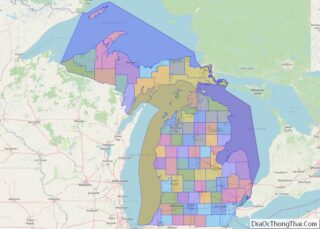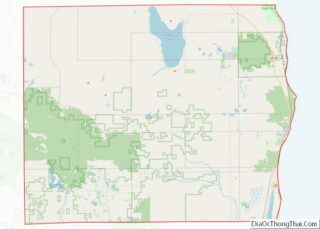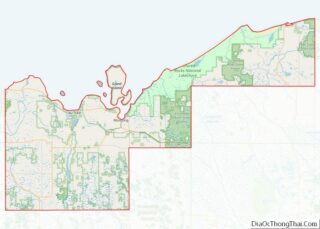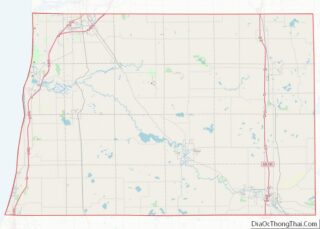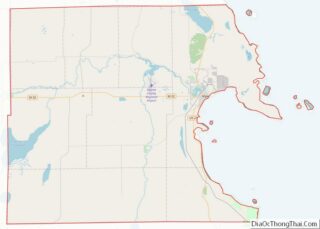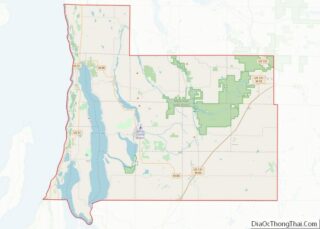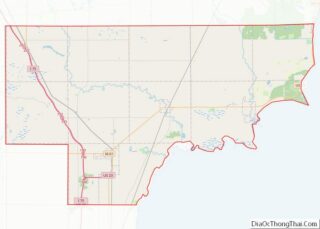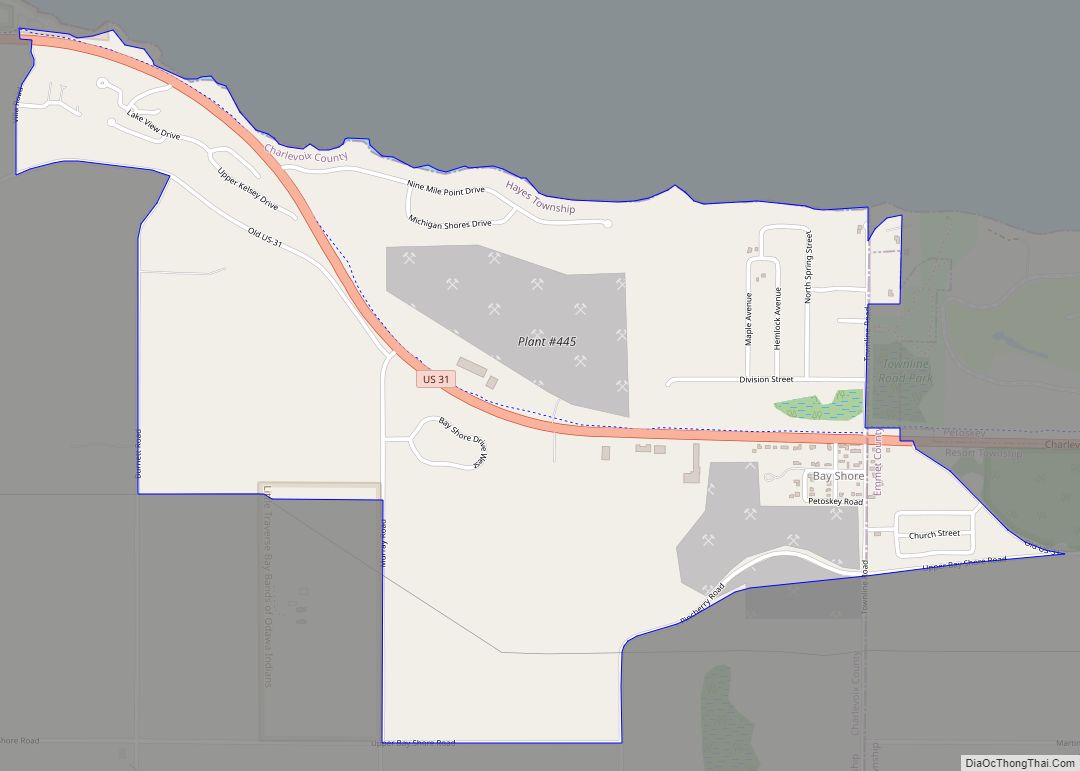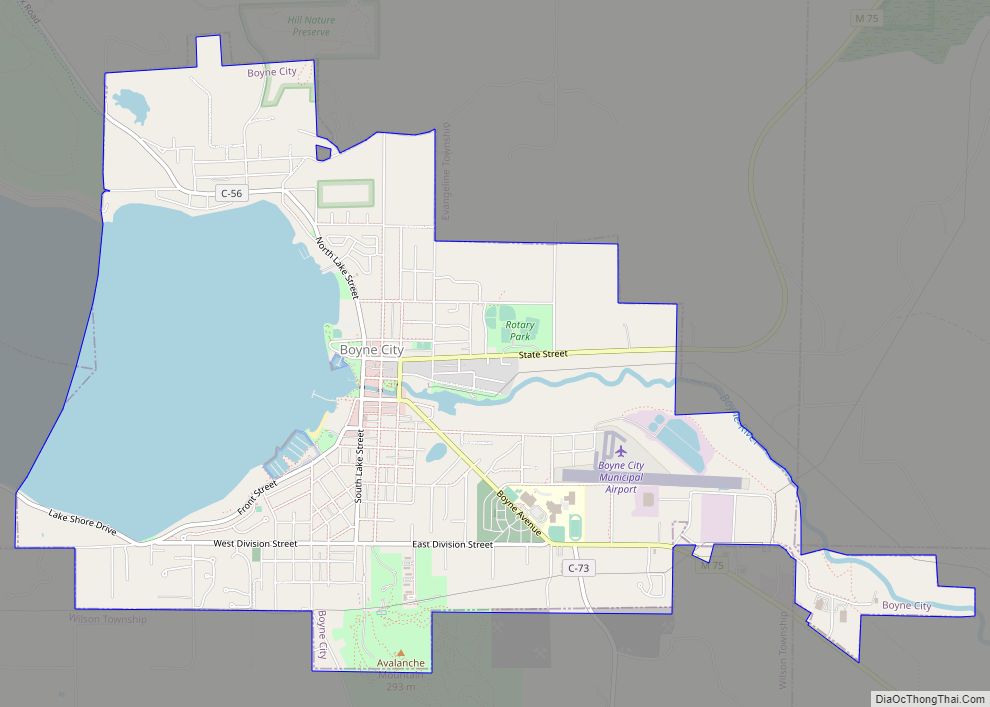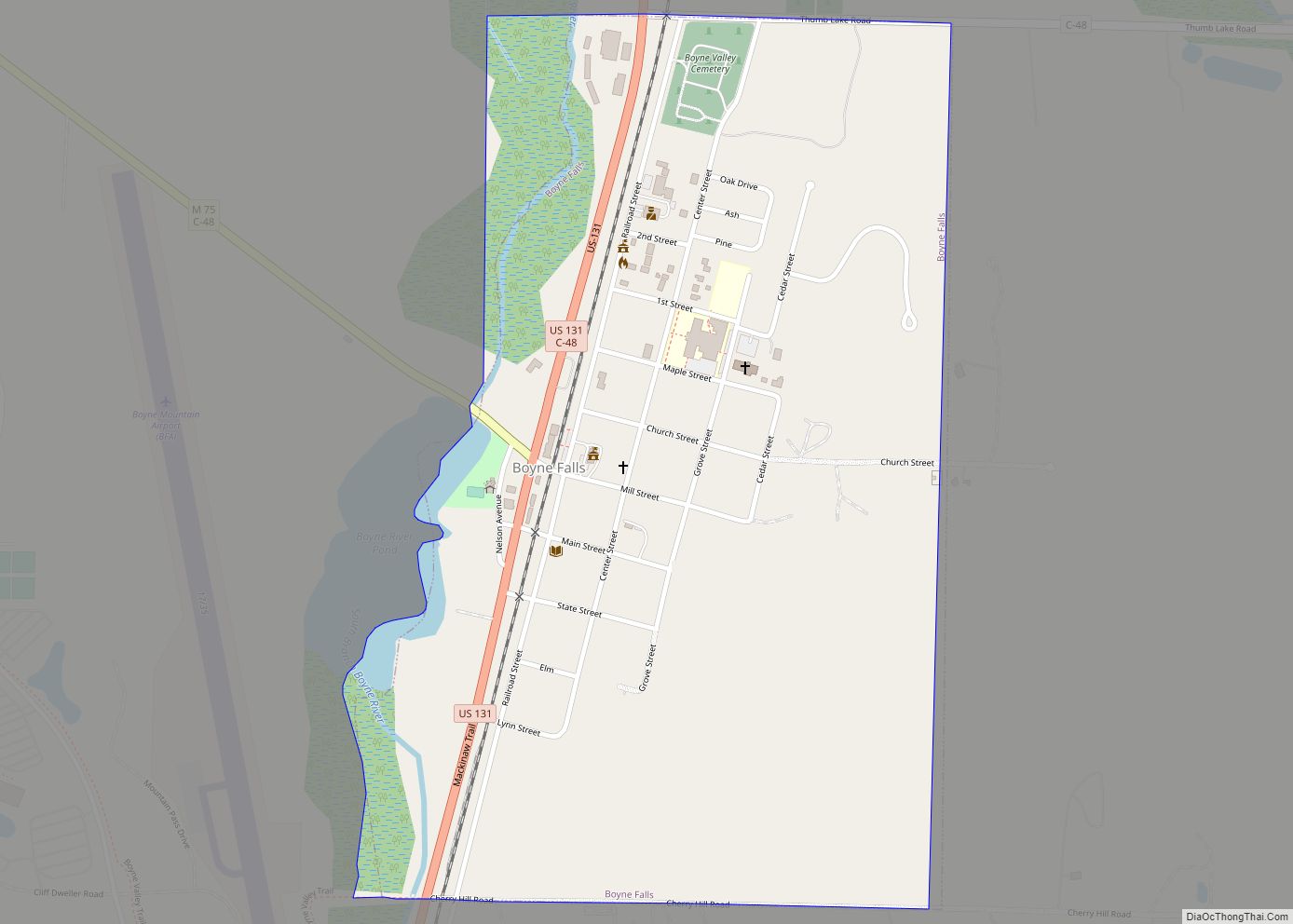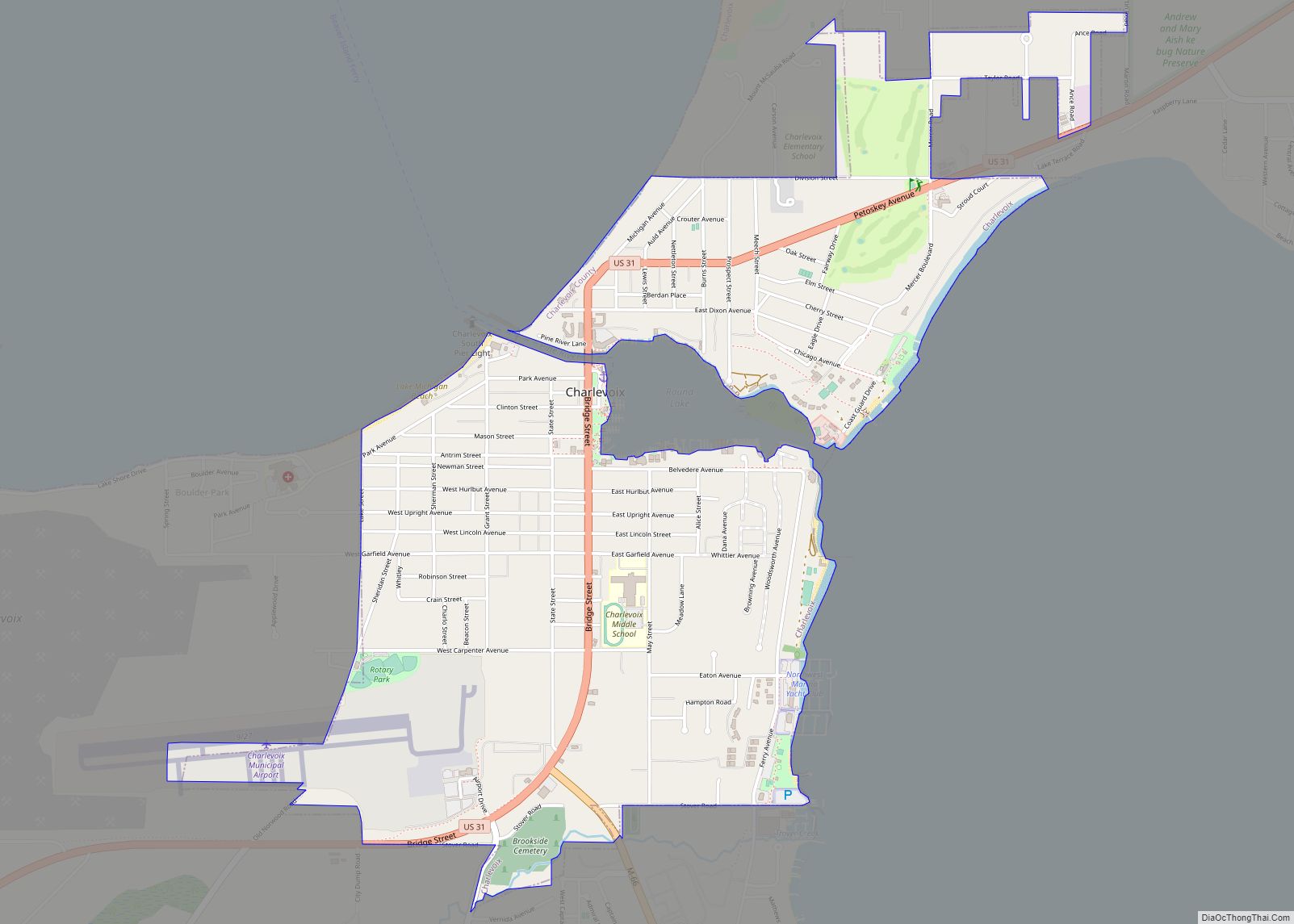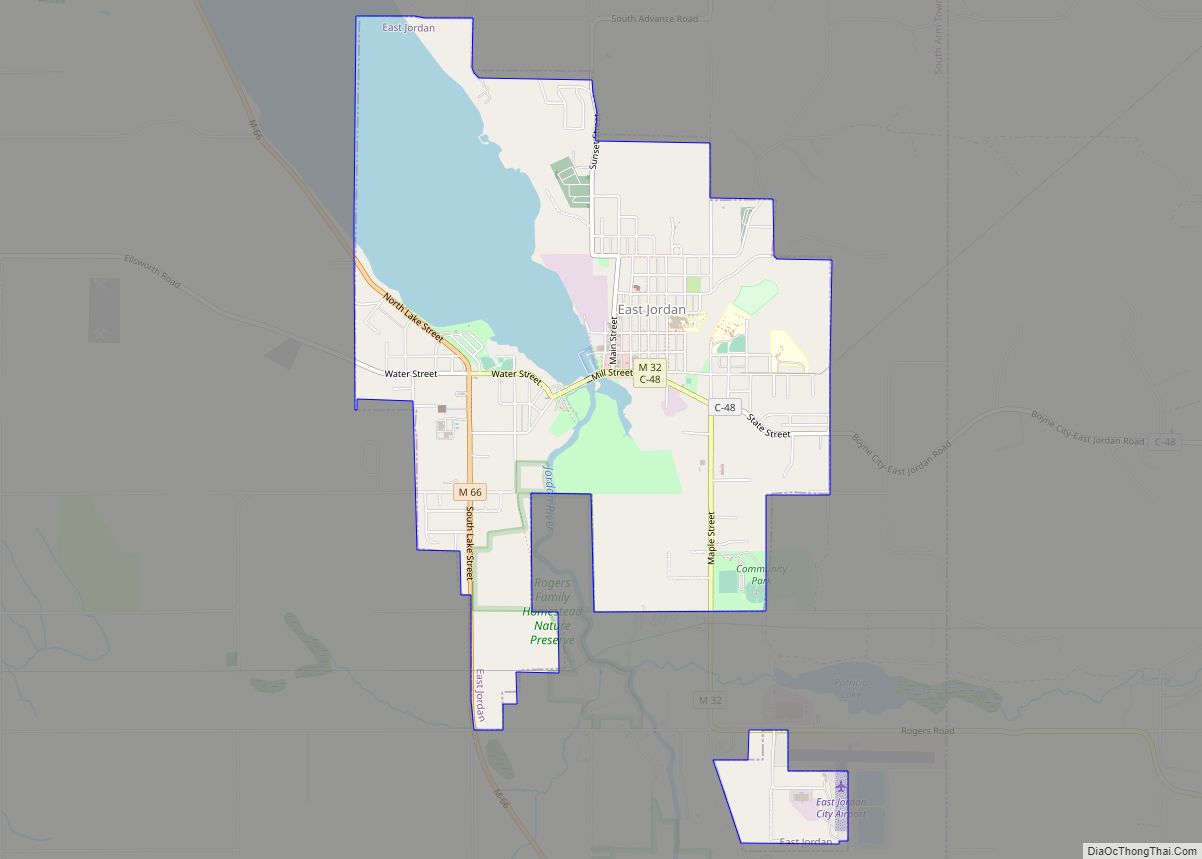Charlevoix County (/ˈʃɑːrləvɔɪ/ SHAR-lə-voy) is a county in the U.S. state of Michigan. The county seat is Charlevoix. Located in the Northern Lower Peninsula, Charlevoix County is bisected by Lake Charlevoix, Michigan’s third largest inland lake. As of the 2020 Census, the county’s population was 26,054.
Beaver Island, the largest island in Lake Michigan, is located within Charlevoix County.
| Name: | Charlevoix County |
|---|---|
| FIPS code: | 26-029 |
| State: | Michigan |
| Founded: | 1869 |
| Named for: | Pierre François Xavier de Charlevoix |
| Seat: | Charlevoix |
| Largest city: | Boyne City |
| Total Area: | 1,390 sq mi (3,600 km²) |
| Land Area: | 416 sq mi (1,080 km²) |
| Total Population: | 26,054 |
| Population Density: | 62/sq mi (24/km²) |
| Time zone: | UTC−5 (Eastern) |
| Summer Time Zone (DST): | UTC−4 (EDT) |
| Website: | www.charlevoixcounty.org |
Charlevoix County location map. Where is Charlevoix County?
History
1840s: surveyed and organized as Keskkauko County
Between 1840 and 1841, surveyors William Austin Burt, John Mullett and Charles W. Cathcart, surveyed much of Northern Michigan. Cathcart oversaw the internal lines survey for 34N 08W, the region which would later be known as Charlevoix. Mullett and Cathcart laid out many of the townships in the new county including Charlevoix Township.
The county was originally organized in 1840 as Kesk-kauko in honor of a great chief of the Saginaw tribe, and name was changed from Resh-kanko to Charlevoix County in 1843. The county was named in 1843 for Pierre François Xavier de Charlevoix, a Jesuit missionary of the French colonial era.
1853: Strangites gain power and re-organize Keskkauko into Emmet County
In 1847, a group of “Strangite” Mormons settled on Beaver Island and established a “kingdom” led by “King” James Jesse Strang. There were bitter disputes between Strang’s followers and other white settlers. Strang, seeking to strengthen his position, gained election to the Michigan State House of Representatives. In January 1853, he pushed through legislation titled, “An act to organize the County of Emmet”, which enlarged Emmet County by attaching the nearby Lake Michigan islands to Emmet county, as well as a portion of Cheboygan County and Keskkauko/Resh-kanko/ Charlevoix. Charlevoix was thus organized in 1853 as a township under Emmet County and consisted all of the nine townships in the southern half of Emmet County.
Popular dissatisfaction with Mormon power
Due to Strang’s influence, Mormons came to dominate Emmet county government, causing an exodus of many non-Mormon settlers to neighboring areas. In 1855, the non-Mormon resistance succeeded in getting the Michigan Legislature to reorganize Emmet County. The islands, including Beaver Island and North and South Manitou Islands, were transferred into the separate Manitou County, which effectively eliminated Mormons from Emmet County government. After an assassination attempt on June 20, 1856, Strang died three weeks later.
Charlevoix Township splits off to become Charlevoix County in 1869
Emmet County continued to experience tensions as citizens clashed over whether to put the county seat at Little Traverse (Harbor Springs) versus Mackinaw City. In a contested election in 1867, residents voted to move the county seat to Charlevoix, which was upheld by a Circuit Court decision in 1868. However, in 1869, Charlevoix County was split from Emmet County, resulting in Charlevoix being the official county seat for Emmet county as well as for the newly formed Charlevoix County.
County seat wars – Charlevoix vs East Jordan vs Boyne City
In 1873, the Grand Rapids and Indiana Railroad was completed through the eastern side of Charlevoix county up to Petoskey, and the east side of Pine Lake became more and more populated. For example, Resort Township and Springvale Township, Michigan were formed in 1880 as a part of Charlevoix County. As new townships became established, Boyne City colluded with East Jordan to gain a requisite 2/3 majority of township supervisors to vote to move the county seat to East Jordan. In October 1884, 11 of the existing 16 township supervisors designated East Jordan to be the county seat. In October 1886, Boyne City convinced 2/3 of township supervisors to move the county seat to Boyne City.
Finally, in a January 1897 land deal with Emmet County and the state legislature, Charlevoix County took on three townships on Beaver Island while giving up Resort, Bear Lake, and Springvale townships to Emmet County. The resulting balance of township supervisor votes gave the City of Charlevoix enough votes to obtain the county seat after a 13-year hiatus.
Other history
The Ironton Ferry began operation in 1876, and Ironton soon became a location for iron manufacture.
There are ten Michigan state historical markers in the county, and the area was once home to a thriving culture of Odawa fishers, hunters, and fur trappers.:
- Big Rock Point Nuclear Power Plant
- Boyne City United Methodist Church
- Charlevoix Depot
- Greensky Hill Mission
- Horace S. Harsha House
- Horton Bay
- John Porter and Eva Porter Estate
- Mormon Kingdom
- Mormon Print Shop
- Norwood Township Hall
Charlevoix County Road Map
Geography
According to the U.S. Census Bureau, the county has a total area of 1,390 square miles (3,600 km), of which 416 square miles (1,080 km) is land and 974 square miles (2,520 km) (70%) is water. It is the fourth-smallest county in Michigan by land area.
Mainland Charlevoix County features a shoreline on both Traverse Bays (Grand Traverse Bay and Little Traverse Bay) of Lake Michigan.
Lake Charlevoix, with 17,200 acres (7,000 ha) surface area and 56 miles (90 km) of shoreline, is a very prominent feature of the county. Gull, Hat, Pismire, and Shoe Islands, which are part of the Beaver Island archipelago, form the Lake Michigan division of the Michigan Islands National Wildlife Refuge, and two of them are part of the Michigan Islands Wilderness Area.
The county is considered to be part of Northern Michigan.
Adjacent counties
By land
- Emmet County (north)
- Cheboygan County (northeast)
- Otsego County (southeast)
- Antrim County (south)
By water
- Leelanau County (southwest)
- Schoolcraft County (northwest)
National protected area
- Michigan Islands National Wildlife Refuge (part)
